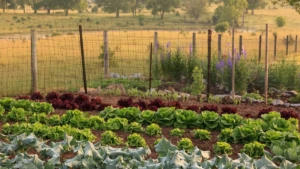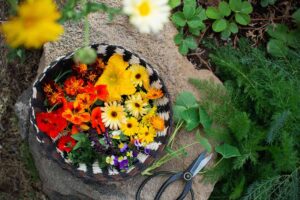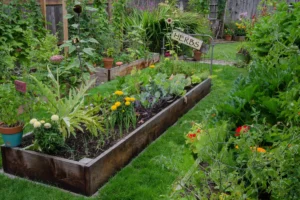Tips for Growing Beautiful Roses in Your Garden
Rose bushes have graced American gardens for centuries, their timeless beauty and intoxicating fragrance making them a perennial favorite among gardeners across the US. Whether you’re a novice gardener or have years of experience, growing roses can be both rewarding and challenging. This comprehensive guide will walk you through everything you need to know to cultivate stunning roses that will be the envy of your neighborhood.
Understanding Rose Varieties
Before diving into rose cultivation, it’s essential to understand the different types available for your garden. Each variety has unique characteristics, care requirements, and visual appeal.
Hybrid Teas
Hybrid tea roses are perhaps the most recognizable and popular roses in the US market. These classic beauties produce large, well-formed blooms on long, straight stems, making them ideal for cutting and displaying. Varieties like ‘Peace’, ‘Mr. Lincoln’, and ‘Double Delight’ have stood the test of time for their reliability and stunning flowers.
Floribundas
If you’re looking for abundant blooms throughout the growing season, floribunda roses are an excellent choice. These hardy plants produce clusters of smaller flowers, creating a more dramatic display of color in your garden. Popular varieties include ‘Iceberg’, ‘Julia Child’, and ‘Hot Cocoa’.
Shrub Roses
For gardeners seeking low-maintenance options, modern shrub roses offer disease resistance and repeat blooming without extensive care. The David Austin English roses and Knock Out® series have revolutionized rose growing for American gardeners, combining old-rose fragrance and charm with modern hardiness.
Climbing Roses
Perfect for adding vertical interest, climbing roses can transform fences, trellises, and arbors into spectacular flowering features. Varieties like ‘New Dawn’, ‘Don Juan’, and ‘Zéphirine Drouhin’ can grow 10-12 feet tall and provide years of beautiful blooms with proper support and training.
Selecting the Perfect Location
The foundation of successful rose cultivation begins with selecting the right location. According to the United States National Arboretum, roses thrive under specific conditions that optimize their growth and blooming potential.

Sunlight Requirements
Roses require a minimum of 6 hours of direct sunlight daily to produce abundant blooms. When planning your rose garden, observe your yard throughout the day to identify areas that receive adequate morning sunlight. Morning sun is particularly beneficial as it helps dry dew from the leaves, reducing the risk of fungal diseases.
Soil Conditions
The ideal soil for roses is well-draining, rich in organic matter, and has a slightly acidic to neutral pH (6.0-7.0). Before planting, conduct a soil test to determine your soil’s composition and pH level. You can obtain soil testing kits from your local extension office or garden center.
Air Circulation
Proper air circulation around your rose bushes is crucial for preventing fungal diseases. Avoid planting roses in enclosed areas or too close to other plants, structures, or fences that might restrict airflow. Space your rose bushes according to their mature size, typically 2-3 feet apart for most varieties.
Planting Roses for Success
The planting process significantly impacts your roses’ long-term health and performance. Follow these steps to give your roses the best start.
When to Plant
In most regions of the United States, the ideal time to plant roses is in early spring after the danger of frost has passed, or in fall about six weeks before the first frost. These timings allow the plants to establish their root systems before extreme temperatures arrive.
Planting Bare-Root Roses
- Soak bare-root roses in water for 8-12 hours before planting
- Dig a hole 18-24 inches wide and deep enough to accommodate the root system
- Create a small mound of soil in the center of the hole
- Place the rose on the mound, spreading the roots downward
- Ensure the bud union (the swollen part where the rose is grafted) is positioned 1-2 inches below ground level in colder regions or slightly above in warmer areas
- Backfill with soil mixed with compost, firming gently around the roots
- Water thoroughly after planting
Planting Container Roses
- Dig a hole twice as wide as the container and equally deep
- Remove the rose carefully from its container, disturbing the roots as little as possible
- Place the rose in the hole at the same depth it was growing in the container
- Backfill with soil mixed with compost
- Water thoroughly to settle the soil and eliminate air pockets
Essential Rose Care
Consistent care is the secret to growing spectacular roses. Establish a regular maintenance routine that includes the following practices.
Watering Practices
Roses typically need 1-2 inches of water weekly during the growing season. Instead of frequent shallow watering, provide deep, thorough irrigation 1-2 times per week. Direct water at the base of the plant to keep foliage dry and reduce disease risks. Consider installing a drip irrigation system for efficient, consistent watering.
Fertilization Schedule
Proper nutrition is essential for abundant blooms and healthy growth. The following table outlines a typical fertilization schedule for roses in most US regions:
| Time of Year | Fertilizer Type | Application Rate | Notes |
|---|---|---|---|
| Early Spring | Balanced (10-10-10) | As directed on package | Apply when new growth appears |
| Pre-Bloom (May) | Rose-specific (12-6-10) | As directed on package | Promotes bud development |
| Post-First Bloom | Rose-specific (12-6-10) | Half the recommended rate | Encourages repeat flowering |
| Midsummer | Balanced (10-10-10) | As directed on package | Maintains vigor during summer heat |
| Late Summer | Low-nitrogen (5-10-10) | As directed on package | Prepare for dormancy; stop by early September |
Always water thoroughly after applying fertilizer to prevent root burn and facilitate nutrient absorption.
Mulching Benefits
Apply a 2-3 inch layer of organic mulch around your roses, keeping it a few inches away from the stems. Mulch helps:
- Conserve soil moisture
- Suppress weed growth
- Moderate soil temperature
- Add organic matter as it decomposes
- Prevent soil-borne disease splash during rainfall
Shredded bark, compost, or dried leaf mulch are excellent options for rose beds.

Pruning Techniques for Beautiful Blooms
Proper pruning is essential for maintaining rose health, shape, and productivity. While pruning might seem intimidating to beginners, mastering a few basic techniques will significantly improve your roses’ performance.
When to Prune
In most US regions, the best time for major pruning is late winter or early spring when buds are swelling but before growth starts. In warmer southern states, this might be as early as January, while northern gardeners might prune in March or April.
Pruning Tools and Safety
Always use sharp, clean pruning tools to ensure clean cuts and prevent disease transmission. Basic tools include:
- Bypass pruners for stems up to ½ inch thick
- Loppers for thicker canes
- Pruning saw for very thick, woody growth
- Heavy gloves to protect against thorns
Disinfect your tools between plants using a solution of one part bleach to nine parts water or 70% rubbing alcohol.
Basic Pruning Steps
- Remove all dead, damaged, or diseased wood, cutting back to healthy tissue
- Eliminate crossing or rubbing canes to improve air circulation
- Remove any thin, weak growth (typically pencil-size or smaller)
- Cut remaining canes back to 12-18 inches for hybrid teas, or as appropriate for your rose type
- Make angled cuts ¼ inch above outward-facing buds to encourage outward growth
- Seal large cuts with white glue to prevent cane borers
Managing Pests and Diseases
Roses can be susceptible to various pests and diseases, but preventive measures and early intervention can keep your plants healthy and productive.
Common Rose Pests
Aphids: These small, soft-bodied insects cluster on new growth and buds, sucking plant sap. Control aphids by spraying plants with a strong stream of water or applying insecticidal soap.
Japanese Beetles: These metallic green beetles skeletonize rose leaves and damage flowers. Handpick beetles in the morning when they’re less active, or use beetle traps away from your roses to draw them elsewhere.
Thrips: Tiny insects that damage flower buds, causing distorted blooms. Control with insecticidal soap or neem oil applied consistently.
Preventing Rose Diseases
Black Spot: This fungal disease causes black spots on leaves, eventually leading to defoliation. Prevent by:
- Choosing resistant varieties
- Watering at the base of plants
- Ensuring good air circulation
- Removing and disposing of infected leaves
- Applying fungicide preventively in humid regions
Powdery Mildew: Appears as a white powdery substance on leaves and stems. Prevent with the same measures as black spot, plus avoid overhead watering, especially in the evening.
Rose Rosette Disease: This viral disease is spread by microscopic mites and causes distorted growth and excessive thorniness. There is no cure, so infected plants must be removed entirely to prevent spread.
Seasonal Rose Care Calendar
Adjusting your care regimen according to the seasons will ensure your roses remain healthy year-round.
Spring (March-May)
- Complete major pruning as new growth begins
- Apply first round of fertilizer when leaves appear
- Begin regular watering as needed
- Watch for early signs of pests and diseases
- Apply preventive fungicide in humid regions
- Mulch beds after soil warms
Summer (June-August)
- Deadhead regularly to encourage repeat blooming
- Continue deep watering during dry periods
- Apply second round of fertilizer after first flush of blooms
- Monitor for pest and disease issues
- Provide afternoon shade in extremely hot regions
Fall (September-November)
- Reduce or eliminate fertilization
- Continue watering until ground freezes
- Clean up fallen leaves and debris
- Prune lightly to remove any damaged growth
- Apply winter protection after first frost (in cold regions)
Winter (December-February)
- Mound soil or mulch around base of plants in cold regions
- Apply winter protection such as rose cones or burlap wraps
- Plan and order new roses for spring planting
- Clean and sharpen pruning tools
- Enjoy rose catalogs and dream of spring!
Advanced Rose Growing Techniques
Once you’ve mastered the basics, consider these advanced techniques to take your rose garden to the next level.
Propagating Roses from Cuttings
Growing roses from cuttings allows you to expand your garden economically and preserve favorite varieties. The process involves:
- Taking 6-8 inch cuttings from semi-hardwood stems in late spring or early summer
- Removing lower leaves and dipping the cut end in rooting hormone
- Planting in a mix of perlite and peat moss
- Covering with a plastic dome or clear plastic bag to maintain humidity
- Keeping soil moist until roots develop (typically 4-8 weeks)
Exhibition Growing
If you’re interested in showing roses, additional steps will help produce competition-quality blooms:
- Disbudding: Remove side buds to direct energy to central blooms
- Shading: Protect developing blooms from harsh sun with paper bags or shade cloth
- Spraying: Maintain a more rigorous disease prevention program
- Grooming: Clean foliage with diluted milk solution to enhance shine

Incorporating Roses into Garden Design
Roses can play various roles in your garden design, from focal points to companions for other plants.
Companion Planting
Certain plants grow harmoniously with roses, either by repelling pests, attracting beneficial insects, or simply complementing roses aesthetically:
- Lavender: Repels aphids and complements roses visually
- Garlic and chives: Deter aphids and black spot
- Catmint (Nepeta): Attracts beneficial insects and provides contrasting color
- Lady’s mantle (Alchemilla mollis): Creates an attractive ground cover beneath roses
- Clematis: Can be trained to grow through climbing roses for extended bloom periods
Rose Garden Styles
Consider these popular design approaches for showcasing your roses:
Formal Rose Garden: Symmetrical beds with clearly defined edges, often featuring hybrid teas and floribundas organized by color.
Cottage Garden: A more relaxed style integrating roses with perennials, herbs, and annuals for a naturalistic look.
Modern Minimalist: Limited color palette with mass plantings of the same rose variety for dramatic impact.
Rose Border: Mixed borders where roses serve as “backbone” plants among complementary perennials.
Conclusion
Growing beautiful roses requires knowledge, attention, and care, but the rewards are well worth the effort. By understanding the fundamental needs of roses and implementing proper cultivation practices, you can enjoy these magnificent flowers for years to come. Remember that experience is the best teacher—each season in your rose garden will bring new lessons and increasingly spectacular blooms.
As you embark on or continue your rose-growing journey, connect with local rose societies and extension offices for region-specific advice. With patience and persistence, you’ll soon be enjoying a garden filled with the unparalleled beauty and fragrance of healthy, vibrant roses.






